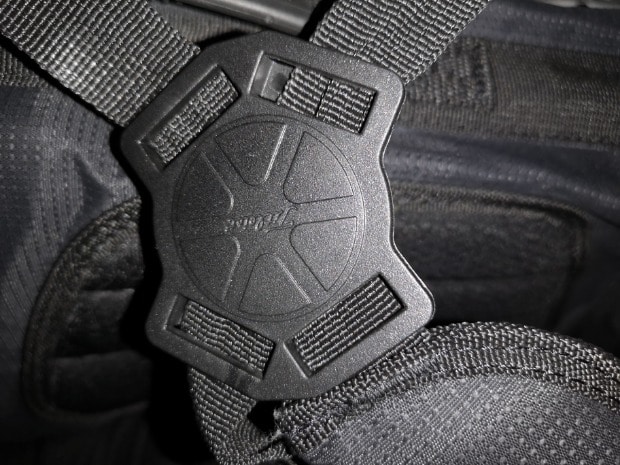How To Tie Down A Golf Cart On A Trailer: Mastering Trailer Transport
If you plan on transporting your golf cart, it’s important to ensure it’s properly secured to the trailer. This will help to prevent it from shifting or moving during transport, which could cause damage to the cart or the trailer.
The best way to tie down a golf cart on a trailer is to use two or three tie-down straps. The straps should be long enough to reach from the front of the cart to the back and strong enough to hold the weight of the cart.
In this post, we’ll show you how to tie down a golf cart on a trailer step-by-step, so you can transport your golf cart safely and worry-free.
Step-By-Step Guide Tying Down A Golf Cart On A Trailer

When it comes to transporting a golf cart on a trailer, proper securing is essential to ensure a safe journey. By following these step-by-step instructions, you can confidently tie down your golf cart and prevent any accidents or damage during transportation.
Step 1: Gather The Necessary Equipment
Before you begin, make sure you have all the required equipment readily available. This includes
- Ratchet straps or tie-down straps- Ensure they are in good condition and have sufficient length to secure the golf cart.
- Soft loops or axle straps- These will be used to secure the straps to the golf cart’s frame or axles.
- Bungee cords or rope (optional)- You may need these to secure loose items or accessories on the golf cart.
Step 2: Position The Golf Cart On The Trailer
Carefully drive the golf cart onto the trailer, ensuring it is properly aligned and centered. Make sure the wheels are evenly positioned on the trailer’s surface, providing stability during transport.
Step 3: Attach The Straps To The Golf Cart
Place soft loops or axle straps around the golf cart’s frame or axles, ensuring they are securely fastened. Leave enough slack in the straps to allow for adjustment but ensure they are not too loose.
Step 4: Connect The Straps To The Trailer
Attach the ratchet straps or tie-down straps to the loops or axle straps, depending on the design and configuration of your equipment. Connect the other end of the straps to the designated tie-down points on the trailer.
Step 5: Tighten And Secure The Straps
Using the ratchet mechanism (if applicable), tighten the straps evenly on both sides of the golf cart. Ensure there is enough tension to secure the cart firmly to the trailer without causing any damage.
Step 6: Double Check The Security
Once the straps are tightened, give them a firm tug to ensure they are secure. Confirm that the golf cart is stable on the trailer and doesn’t move or shift excessively.
Step 7: Secure Loose Items
If there are any loose items or accessories on the golf cart, such as golf bags, coolers, or other equipment, secure them with bungee cords or rope to prevent them from moving during transit.
Step 8: Test The Stability
Before hitting the road, perform a final check to ensure the golf cart is securely tied down. Shake the trailer gently to see if there is any noticeable movement or instability. If everything is secure, you’re ready to transport the golf cart.
Choosing The Right Equipment For Tying Down Your Golf Cart

When transporting your golf cart, ensuring it is securely tied down is crucial for safety. Choosing the right equipment for tying down your golf cart can provide peace of mind during transportation. Here are some key considerations and steps to help you select the appropriate equipment.
Assess Your Golf Cart
Begin by evaluating the size, weight, and dimensions of your golf cart. This information will determine the type and strength of equipment needed for secure tie-down.
Determine Tie-Down Points
Identify the anchor points on your golf cart where you can attach the tie-down straps or cables. These points are typically located on the frame or chassis of the cart.
Select Tie-Down Straps
Opt for high-quality tie-down straps made from durable materials like nylon or polyester. Choose straps with a suitable weight capacity that can handle the weight of your golf cart.
Consider Ratchet Straps
Ratchet straps provide excellent tension control and are often preferred for securing golf carts. Look for straps with a ratcheting mechanism that allows easy tightening and loosening.
Use Soft Loop Straps
To protect the paint or finish of your golf cart, consider using soft loop straps. These straps wrap around the frame or axles and provide a cushioning effect, preventing damage during transportation.
Choose Anchor Points
Ensure the anchor points you select for attaching the tie-downs are strong and securely mounted. Avoid attaching straps to fragile components that may get damaged or cause the tie-downs to come loose.
Check Weight Ratings
Verify the weight ratings of both your tie-down equipment and the anchor points on your transportation vehicle. The equipment should be able to handle the weight of your golf cart to ensure a secure tie-down.
Use Sufficient Tie-Downs
Use multiple tie-down straps or cables to distribute the load evenly across the golf cart. This will provide added security and stability during transport.
Follow Proper Techniques
When attaching the tie-downs, follow the recommended techniques provided by the manufacturer. Ensure the straps are tight and secure, with no slack or looseness.
Regularly Inspect And Maintain
Regularly inspect your tie-down equipment for signs of wear or damage. Replace any worn-out or damaged straps to maintain optimal safety during transportation.
Common Mistakes To Avoid When Tying Down A Golf Cart

Whether moving a golf cart to a new location or securing it for storage, it is essential to avoid common mistakes when tying down a golf cart. Following the correct procedures can prevent accidents, damage, and unnecessary headaches.
Here are some key points to keep in mind
Choosing The Right Tie-Down Straps
Select sturdy and high-quality tie-down straps specifically designed for securing vehicles. Ensure they have a sufficient weight rating to hold the weight of the golf cart securely.
Positioning The Golf Cart
Park the golf cart on level ground and engage the parking brake. Make sure the wheels are straight and the steering wheel is locked in place to prevent movement during transportation.
Attaching The Straps
Secure the tie-down straps to sturdy anchor points on the golf cart. Avoid attaching them to delicate or non-load-bearing parts, such as the roof or windshield.
Proper Strap Placement
Position the straps to avoid interfering with the golf cart’s controls, pedals, or wheels. Ensure the straps are not in contact with any moving parts that could cause damage or friction.
Applying Tension Evenly
Apply tension to the tie-down straps gradually and evenly. This helps distribute the load and prevents excessive pressure on a single point. Tighten the straps until they are snug but not overly strained.
Regularly Checking The Straps
Before and during transportation, periodically check the tie-down straps to ensure they remain secure and haven’t loosened. Make adjustments if necessary to maintain proper tension.
Protecting The Golf Cart’s Finish
Use padding or soft material between the tie-down straps and the golf cart’s body to prevent scratches or damage to the paint or surfaces.
Using Additional Security Measures
If available, consider using additional measures like wheel chocks or ratchet straps for added stability and security. These can further prevent the golf cart from shifting during transit.
Frequently Asked Questions
Tying down a golf cart securely on a trailer is crucial to ensure safe transportation. Here are some quick, clear, and to-the-point FAQs about how to accomplish this task effectively:
How Should I Position The Golf Cart On The Trailer?
Place the golf cart in the center of the trailer, ensuring it is facing forward. This balanced position helps distribute the weight evenly and provides stability during transit.
What Type Of Straps Or Tie-Downs Should I Use?
It is recommended to use sturdy ratchet straps or heavy-duty nylon straps. These provide strong tension and are capable of securing the golf cart firmly to the trailer.
Where Should I Attach The Straps On The Golf Cart?
Attach the straps to sturdy parts of the golf cart, such as the frame or axles. Avoid attaching them to fragile components like the steering wheel or roof. Ensure the straps are tightly secured to prevent any movement.
How Many Straps Should I Use To Secure The Golf Cart?
At a minimum, use four straps, one for each corner of the golf cart. This arrangement helps maintain stability and prevents shifting during transport. Additionally, consider using additional straps for added security, especially for longer journeys.
How Should I Tighten The Straps?
Once the straps are attached, use the ratchet mechanism or tighten them manually until they are snug. Ensure the straps are tightened evenly on both sides to maintain balance. Periodically check the straps during the journey to ensure they remain taut.
Conclusion
Properly tying down a golf cart on a trailer is essential for safe transportation.
By following the step-by-step instructions and using the right equipment, such as ratchet straps and soft loop straps, you can secure the golf cart effectively.
Remember to regularly inspect the tie-downs and avoid common mistakes to ensure a worry-free journey.




